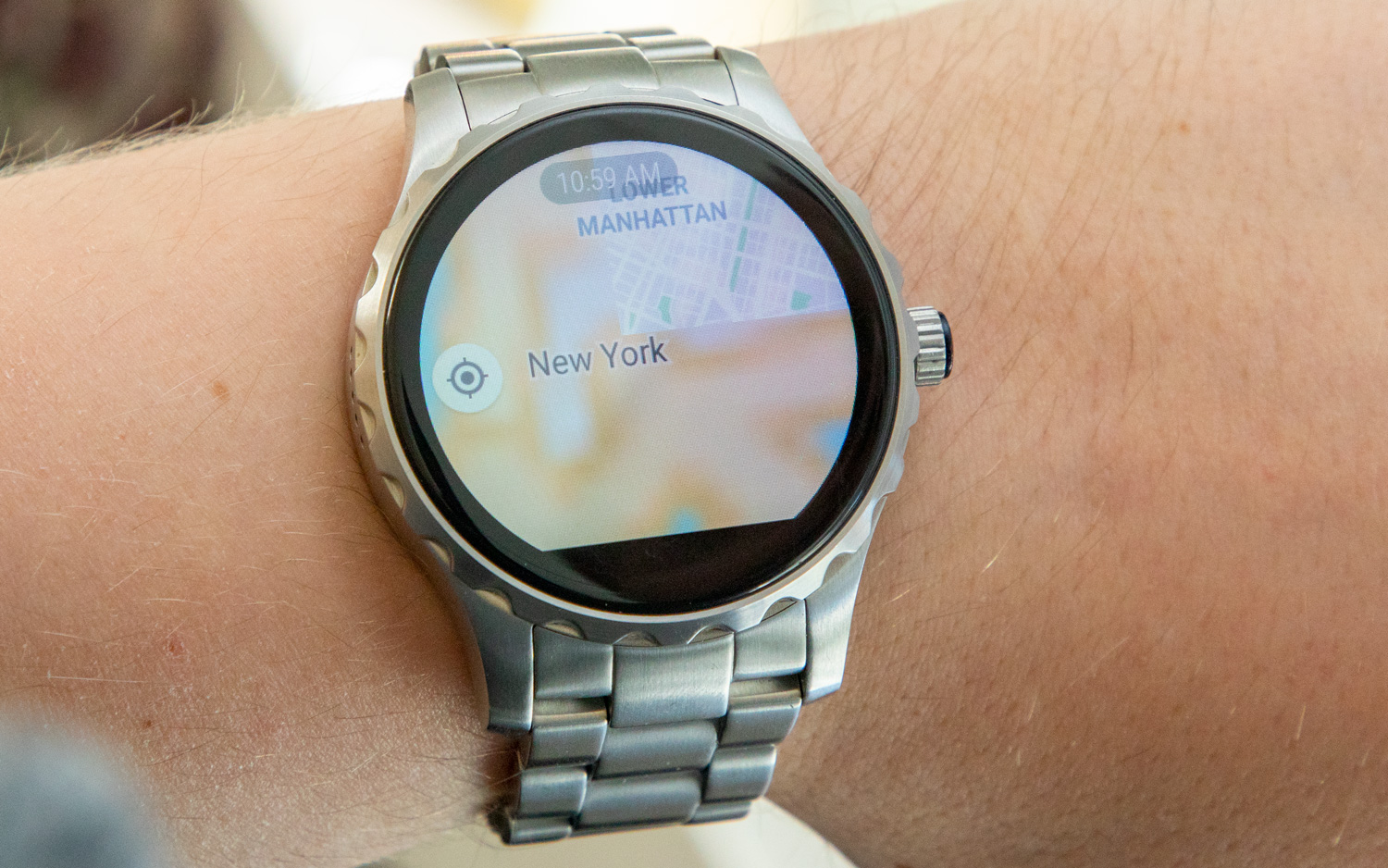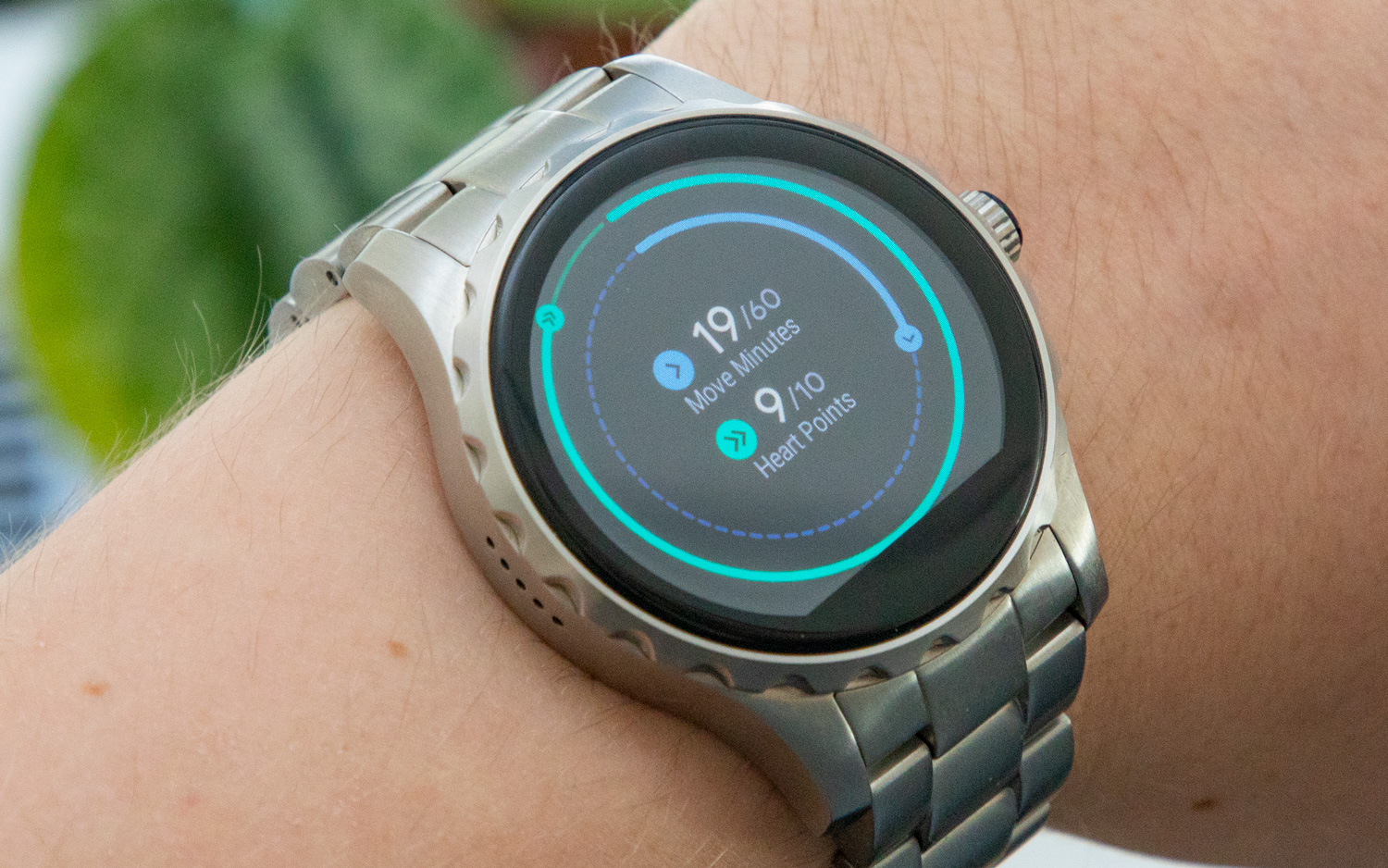My Month with a Wear OS Android Watch: The Good, Bad and Ugly
After a frustrating month with a Wear OS Android watch, I remain hopeful about the future of Google's smartwatch platform.
Having just moved to New York, I figured it was time to get back into shape. As any tech enthusiast would do, I convinced myself that purchasing a smartwatch was the first step in improving my health.

So, to expedite my search for the perfect watch, I asked our resident fitness tracker/smartwatch expert, Caitlin McGarry, for recommendations. The deadpan look she gave when I asked about Wear OS made it clear that this was going to be more of a challenge than I had anticipated.
But I was resilient (and perhaps stubborn), so to bring me back to Earth, Caitlin lent me a Fossil Q Marshal, a Wear OS 2.0 watch we reviewed back in 2017. I've now been testing Wear OS on the Fossil Q Marshal for about a month, and while there is a lot I like about the operating system, it still feels like a work in progress.
Wear OS for Fitness Doesn't Work Out
I won't blame Wear OS for my eventual falling out with the gym, but the software failed to improve my workout in the ways I had hoped.

The default Wear OS workout app, Google Fit, somehow feels both overly simplistic and unnecessarily convoluted. The main interface showed me my Move Minutes and Heart Points, two ill-defined and overly simplistic metrics. Somehow, eating two greasy slices of New York pizza earned me 9 out of 10 Heart Points. I'm not sure what that means, but it shouldn't have made me feel good about my unhealthy eating habits.
Scrolling down from the colorful main page brings up some concrete metrics, including steps, calories and miles. These are displayed as white font over a black interface — no outlines, color or graphics to speak of. The UI looks unfinished and not at all like something designed by one of the world's biggest tech companies.
Somehow, eating two greasy slices of New York pizza earned me 9 out of 10 Heart Points. I'm not sure what that means, but it shouldn't have made me feel good about my unhealthy eating habits.
To its credit, Google Fit lets you choose from among dozens of specific workouts, and the app accurately tracked my steps and calories burned. Still, Fit is a basic app that doesn't provide the functionality of Apple's Workout app. In comparison, Apple Workout shows you more information on a single interface, so you don't have to continuously swipe while you're working out.
My experience with the music-streaming apps available on Wear OS was equally disappointing. As someone who uses Google Play Music as a primary streaming service, I figured Wear OS would be a perfect fit for me. However, the Play Music app, in general, has limited functionality, especially when operated independently from a smartphone. Yes, the app let me select songs by artist, album and playlist, but there is no search bar to expedite the process. You can start music using your voice, but that isn't always a viable solution when you're in a loud gym.
MORE: Best Fitness Trackers for Running, Swimming and Training
Instead, I was forced to swipe through dozens of artists and albums, a nearly impossible task when running on a treadmill or lifting weights. The next-best option was to create a Workout playlist and use my watch like it was a 10-year-old iPod. Frustrated with Play Music, I did a brief stint with Spotify before discovering that its interface is just as user-hostile and that, unlike Play Music, it doesn't support offline listening.
A Clean Interface Hampered by Poor Performance
There is a lot to like about Wear OS. For one, setting up my watch and pairing it to my OnePlus 6 was straightforward. Once the two were paired, the watch instantly re-connected to my phone via Bluetooth and never dropped the connection.

I also found the user interface fairly intuitive. The colorful icons on the home page and app menu look great, and the notification pop-ups display pertinent information. Swiping down from the top of the home page gives you access to quick settings, while swiping up from the bottom shows your notifications. With a left swipe, you can access the Google Assistant along with shortcuts to see the weather, reminders and workouts. A right swipe takes you to Google Fit, where you can rack up those Move Minutes and Heart Points.
Some areas could be improved. For example, the app tray displays one app at a time, moving to the next one in alphabetical order, so you have to scroll through a long list to find what you're looking for. You can press and hold an app to pin it to the top, but then it disappears from the list, so you'll need to remember which apps you have and haven't pinned.
The Galaxy Watch felt just as responsive as my smartphone, whereas the Fossil Q lagged every time I opened an app.
But as they say, you're only as good as your weakest link, and in the case of Wear OS, that link is hardware. Specifically, it's the Qualcomm SoCs that Wear OS watches rely on, which don't provide anywhere near the speed or efficiency needed to compete in the space. I spent a week with Samsung's new Galaxy Watch before my demo with the Fossil Q Marshal, and the gap in performance between these devices was obvious the moment I switched to the Wear OS watch. The Galaxy Watch felt just as responsive as my smartphone, whereas the Fossil Q lagged every time I opened an app. Even the Fossil Sport, which is powered by the new Snapdragon Wear 3100 chip, feels sluggish.
MORE: Best (Android) Wear OS Watches
Battery life is another major problem with Wear OS smartwatches. Even the newest Wear OS watches, with the more efficient Snapdragon Wear 3100 chip, stay powered, at most, for a single day of use. In comparison, a Samsung Galaxy Watch will last up to four days on a charge. In my experience, the Fossil Q made it through a day of use but only when display brightness was on the lowest setting. Battery life deteriorated when I cranked up the brightness to 80 percent and enabled notifications.
Your Turn, Google
After my trial with the Fossil Q, I couldn't help but feel that Google was failing us. By "us," I don't mean just Android users, but also those who don't have the budget for an Apple Watch. After all, iPhone users make up one-third of the people who own a Wear OS smartwatch.
The gap between the best Wear OS watch and the latest Apple Watch is colossal. As wary as I am about online user reviews, the Apple Watch's 4.9-star rating after more than 1,300 reviews on Best Buy can't be overlooked. No Wear OS device has come close to receiving such near-universal acclaim. For comparison, the Fossil Q Marshal I used has a rating of 4.1 stars after 167 reviews — not a bad score but certainly not up to the standard set by the Apple Watch.
Android users could see the light at the end of the tunnel last year, when Pixel Watch rumors ran rampant. However, that optimism was squashed when Google confirmed to Tom's Guide that it wasn't ready to release a smartwatch in 2018 and would, instead, work with third-party manufacturers to improve Wear OS.
But the longer Google delays, the further Apple pushes ahead. The Apple Watch accounts for nearly half of all smartwatch sales as of this month. More importantly, Apple continues to add features not found in other devices, like the ECG app on the Watch Series 4 (our favorite overall smartwatch).
Still, there is reason to be hopeful about the future of Wear OS. Remember, it took the Android operating system several years to find its footing, but once it did, Google needed only one attempt to create a smartphone as good as or better than everything else on the market. The $40 million Google spent on Fossil's smartwatch IP is a positive step toward releasing a true Apple Watch competitor.
Until then, we can only hope an eventual Pixel smartwatch enters the market in the same way as the Pixel phone did when it disrupted the smartphone industry.
Credit: Tom's Guide
Sign up to get the BEST of Tom's Guide direct to your inbox.
Get instant access to breaking news, the hottest reviews, great deals and helpful tips.
Phillip Tracy is the assistant managing editor at Laptop Mag where he reviews laptops, phones and other gadgets while covering the latest industry news. Previously, he was a Senior Writer at Tom's Guide and has also been a tech reporter at the Daily Dot. There, he wrote reviews for a range of gadgets and covered everything from social media trends to cybersecurity. Prior to that, he wrote for RCR Wireless News covering 5G and IoT. When he's not tinkering with devices, you can find Phillip playing video games, reading, traveling or watching soccer.
-
dm29 Wishful thinking I'm afrais. Without SoC vendor involvement, is just impossible that we'll see competitive Wear OS. Read 'Even with the Google/Fossil deal, Wear OS is doomed" at ArsReply -
stuffofinterest I can't believe you are trying to draw your conclusions off of a two year old model.Reply
First, off, there are many other options out there. A few have the newer SoC. Most have gone to fully round screens rather than the flat tire you were using.
Second, everyone has been saying Wear OS (or Android Wear) is dead for something like three years now. Yet, vendors keep releasing new models.
Third, and finally, people seem to think that a smart watch should do everything their phone does. Its a smaller package that costs about 1/3 the price (or less) than a high end phone. Control your expectations a bit. I get my notifications, can preview e-mails and calendar events, and do other functions a typical watch would do such as stopwatch and timer. I don't need everything under the sun and moon on my wrist.
